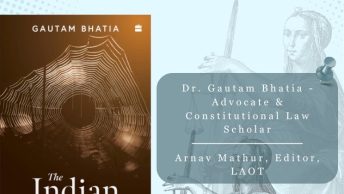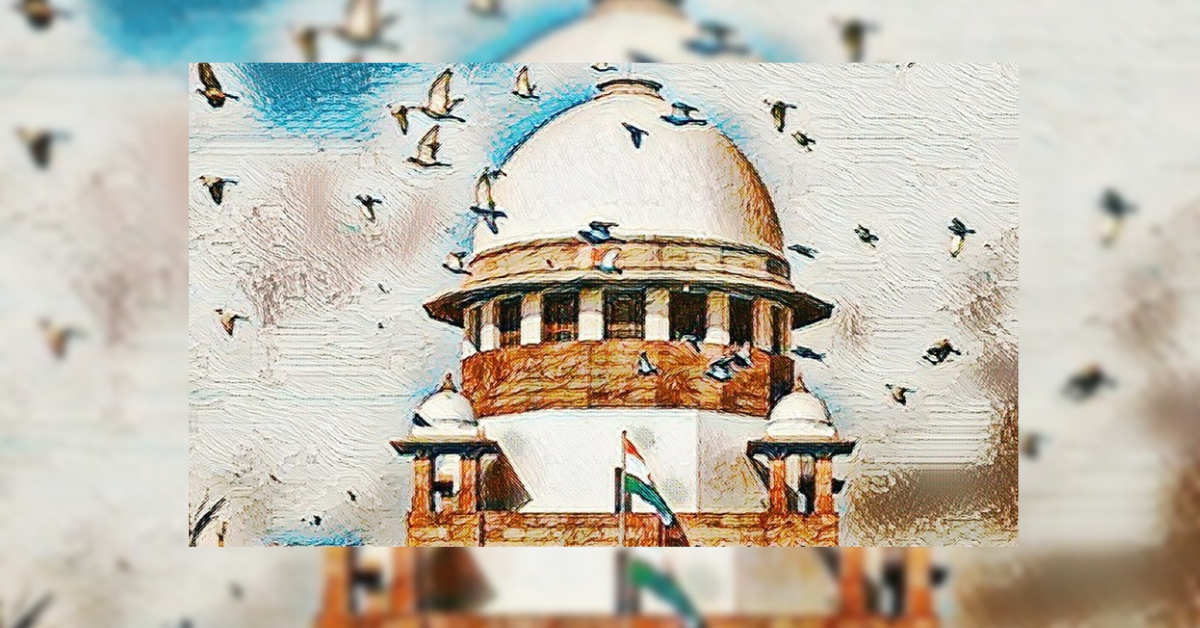In the comments section of the previous post, Vivek Reddy has this to say while discussing the Coelho case:
“One interesting thing about the Ninth Schedule judgment is that it was a unanimous judgment. In the US, John Roberts is emphasizing a lot on the virture of unanimity. I was impressed that our court was able to acquire it, even if it was by default.”
Anyone who has attempted to read the full text of the judgment in the Kesavananda case will have sympathy for the proposition that judges should strive for consensus, and where possible, write a single or at most two or three opinions clearly setting out their decision and the supporting reasoning. To that extent, I think Vivek is right to support the fact that Coelho and some other recent landmark judgments of the Indian Supreme Court have sought to achieve and reflect ‘judicial consensus.’ I am not sure, however, whether this has necessarily added to the quality of the reasoning of these judgments.
There are other considerations to bear in mind in debating whether judicial consensus as reflected in single judgments for the court is a good thing. Here, I draw upon a recent discussion in the context of U.S. constitutional law, which has parallels for Indian constitutional discourse. Reacting to Chief Justice Roberts’ statement that Vivek refers to, Professor Geoffrey Stone, a leading U.S. constitutional scholar has this to say (his full views on the Roberts speech are available here):
“The Court has many responsibilities, and one of them is to produce majority opinions that state a rule of law. Certainly, if the Justices fell into the habit of issuing nine separate opinions in every case, that would create another form of chaos. ….
Chief Justice Roberts wants to promote more unanimous opinions, burying disagreements among the Justices. This, too, is bad policy. The legitimacy of the judicial branch rests largely on the responsibility of judges to explain and justify their decisions in opinions that can be publicly read, analyzed, and criticized. Consensus opinions designed to hide real disagreements among the Justices fail abdicate that responsibility. The price of achieving consensus is inevitably to eliminate from the Court’s opinion anything that one or more of the Justices disagrees with. The result is opinions that say little of substance, mask the critical steps in the Court’s reasoning, and persuade no one of the wisdom of the decision or the quality of the reasoning. To make the point dramatically, the quintessential consensus opinion that decides a case narrowly would read: “We reverse.”
It is surely true that a proliferation of separate concurring and dissenting opinions can be annoying, confusing, and divisive. But such opinions often play a central role in the evolution of the law. By making public the disagreements within the Court, such separate opinions foster a vigorous discourse about the merits of the competing positions and energize robust debate about the different ways to resolve constitutional questions. This ongoing, public deliberation ultimately strengthens the Supreme Court’s work product and contributes to public understanding. To squelch such separate opinions in order to achieve the appearance of consensus would both degrade the quality of the Court’s work and undermine the public’s and the legal profession’s ability to evaluate the seriousness and persuasiveness of the Court’s reasoning. In the long run, it would undermine the Court itself.
It is also important to note that some of the most influential opinions in the history of the Supreme Court were concurring and dissenting opinions. Although they did not command the support a majority of the Justices at the time, the eventually won the day because of the force of their reasoning. Familiar examples, to name just a few, include Justice Harlan’s famous dissenting opinion in Plessy v. Ferguson, the pivotal dissenting and concurring opinions of Justices Holmes and Brandeis in a series of free speech decisions following World War I, and Justice Robert Jackson’s landmark concurring opinion in the Steel Seizure case. By opening the disagreements within the Court to the light of public scrutiny, these opinions exemplify the tradition that despite the principle of precedent, the work of the Supreme Court is always a work in progress that must be open to public scrutiny if it is to retain its legitimacy.”
I find Stone’s analysis quite persuasive. One can think of dissents in India to add to Stone’s list: Justice Fazl Ali’s dissent in Gopalan, Justice Khanna’s dissent in ADM Jabalpur, to name just two prominent ones.
While clarity in judicial opinions and reasoning is a very important consideration, it is equally important that judges aim at getting their results and reasoning right. To the extent that attempts at judicial consensus undermine that objective, they should be viewed with suspicion.






Dear Arun
That was an interesting response. The Stone piece made some good points about adjudicatory styles. It also points to another virtue of the Indian Supreme Court—it was never a minimalist court. It has strayed away from deciding cases “on the basis of a principle or rule of law that decides no more than is necessary to resolve the particular dispute before it.” As Stone says, “The Court’s role is not merely to decide the specific dispute between Joe and Mary, but to enunciate principles of law – especially principles of constitutional law – that will provide guidance to police officers, legislators, prosecutors, lower court judges and, of course, citizens about the nature and extent of the rights and duties.” I think the Indian Supreme Court has not confined adjudication to deciding a dispute between a Ram and Shyam. The Indian Supreme Court not only opines on issues beyond those that arise in the case, but also makes that obiter dicta binding on the Courts below! One could argue that the Indian Supreme Court does not stop at just “enunciating principles of law” and provides guidance outside its domain. Geoffrey Stone might rethink his posiiton in the Indian context.
On the unanimity point, I agree with you that dissenting and concurring judgments in India have contributed to the development of constitutional law. You mentioned Fazal Ali and Khanna. I would add Justice Vivian Bose dissenting opinion in Special Courts case in the early fifties, Subba Rao’s dissenting judgments on a range of issues which subsequently became the law of the land (particularly his dissenting opinion in Radeshyam Khare v. State of M.P on quasi-judicial acts and natural justice which preceded the House of Lords opinion in Ridge v. Baldwin and A.K.Kraipak), Justice Mudholkar’s clairvoyant concurring opinion in Sajjan Singh, Justice Pathak’s dissent in PUDR warning about the perils of PIL. (I can’t think of any path breaking dissent/concurrence in the nineties)
But as a citizen, I still think there is a case for unanimity in the Indian Supreme Court
The American public are comfortable with the notion of the Supreme Court being a political institution. In India, the Supreme Court has built its credibility by projecting an impression that it is an apolitical institution — it is beyond the dirty political fights and acts as a faithful interpreter of the Constitution. Justice Scalia can write a scathing dissenting opinion decrying the opinion of the Court, which is unthinkable in the Indian context. The Supreme Court’s credibility as an independent judicial institution will be destroyed if people come to perceive judges as Congress judge, a BJP judge, an upper caste judge or a Dalit judge.
Of course, you could respond by saying that dissenting or concurring opinions need not be written the Scalia way and can reflect a genuine difference in approach in interpreting the Constitution. That’s true and such opinions might contribute to the development of the law. But on hot button issues, it helps to have a united court. In the Ninth Schedule case, I can see the virtue of having a unanimous judgment. The Ninth Schedule case put the Court directly against the entire political class and a unanimous judgment sends a strong signal that the Court would not tolerate any attempt to reduce the amplitude of judicial review. On the current reservation issue, I can see the political class exploiting any division on the Court to upset the Court’s verdict.
The strongest argument for unanimity comes from Article 141 which speaks of the “law declared by the Supreme Court.” As it is, it quite a task to extract the ratio from one single judgment. It requires a jurisprudential exercise if the ratio has to be extracted from more than one judgment. Several times benches have been constituted whose sole objective is to clarify the judgment issued by the Court in a prior case.
Vivek Reddy
Dear Vivek,
Thanks for the stimulating comment, which opens up many lines of discussion. I will explore some of these here, and perhaps we should discuss some others in more substantive posts later.
I do not disagree with you on the need for unanimity as a general principle, which does go towards upholding the rule of law, especially the virtues of stability and certainty. But, I think this can be taken too far and ultimately, every judge who signs onto a judgment must decide whether he or she is being true to the oath to uphold the constitution that judges take when they are sworn in.
I don’t think the test should be whether the lack of unanimity will expose the court to attacks by political parties – that seems too nakedly political for my liking. The unanimity must result from a genuine conviction on the part of the judges signing on that they think the court arrived at the right result, and adopted the best reasoning for that result. Unanimity should not simply be a way of fending off attacks, either from politicians or from academics or other commentators. I don’t see why unanimity will be a particularly good strategy either – if the judges’ reasoning is poor, and the result is a bad decision, then the mere fact that 5 or 9 judges were unanimous is not much of a shield. As you note, there haven’t been any ‘great’ dissents in the 90s and more recently – this has not prevented anyone from being deeply critical of the Court. Indeed, the fact that not a single judge on the Court is in tune with what the government or commentators think are societal priorities may be a sign that will increase calls for restructuring a judiciary that is out of touch with the masses.
I think you do well to highlight how Indian judges do not adhere to the virtues of minimalism, at least in recent years. I do have some quibbles with your overall characterisation though – at least in its initial years, the Court seemed to want to be minimalistic, and did try in some areas to be cautious and circumspect. Also, there have been judges throughout its history who have adopted minimalist strategies, which suited their generally formalist approach to the law. But what you describe is certainly more true of the Court since the late 70s, and especially through the PIL phase. I think minimalism as a judicial strategy has many virtues, and judges in India too may want to consider them – but that is a matter to be debated in future.
Also, I don’t think the Supreme Court in India has ever been perceived as ‘apolitical’. Recall that Nehru had even in the early years, charged the court with having a political agenda in the right to property cases, though he backed off, and let others carry that issue forward. During the Indira Gandhi years, many, including Kumaramangalam argued along those lines. This criticism resurfaced during the PIL era as well. And now, K. Karunanidhi is carrying forward that long tradition. Legal realism has flourished in India since the 1950s, and I doubt if an argument predicated on the seeming neutrality of the law and Courts in general, will carry much force in India.
One last quibble: I think Justice Pathak’s decision that you refer to was delivered not in PUDR, but in Bandhua Mukti Morcha, and it was a concurrence, because he did agree with the result. However, I agree with you that it was most prescient in its foretelling of subsequent problems in PIL cases, and is a must-read for anyone interested in PIL.
Thanks again for your thought-provoking and informative comment,
Best,
Arun
Reminds me of the Warren Court and in particular Chief Justice Warren’s ‘success’ in obtaining a unanimous decision in Brown v. Board of Education. While the unanimous decision underscored the strength of the stand taken against racial segregation, some do criticize the lack of constitutional analysis.
Incidentally I’m also reminded of the fractured decisions of the U.S. Supreme Court on the constitutional status of political gerrymandering: Davis v. Bandemer and the more recent Vieth v. Jubelirer. In Vieth, four Justices, per Justice Antonin Scalia’s plurality opinion declaring the judgment of the Court, concluded that political gerrymandering claims are not justiciable because the law does not provide any judicially manageable standards to apply in these cases. Four other Justices concluded that political gerrymandering claims are justiciable based on three different rationales. Lastly, Justice Anthony Kennedy concurred while maintaining that he “would not foreclose all possibility of judicial relief if some limited and precise rationale were found to correct an established violation of the Constitution in some redistricting cases.” While the diverse opinions reflect the Court’s struggle in dealing with political gerrymandering, thrashing out the issue publicly can only facilitate the development of doctrinal coherence.